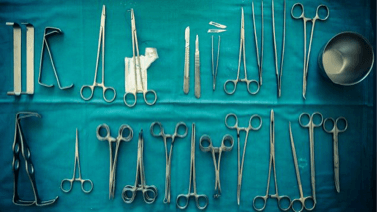
We live in a society where plastic surgery is a big industry. According to the American Society of Plastic Surgeons, 15.6-million people had a cosmetic procedure in 2014. Some of the most popular procedures include breast augmentation and facial rejuvenation. While not as popular (yet), a growing section of the plastic surgery pie is ethnic plastic surgery. The surgery is viewed as changing the appearance of a person to resemble a different ethnicity than the one they were born into as a baby.
Ethnic plastic surgery is also known as ethic modification. This surgical process changes many of the physical features viewed as typical of the race a person was born as and altering them, as well as sometimes even completely erasing them, in order to look like a person of a different race. While many people view this as merely a plastic surgery procedure, it also involves a variety of issues beyond going under the knife. Ethnic modification sits squarely in an intersection of issues including ethnic identity, beauty standards and freedom of choice involving identity.
One of the most interesting pieces written to date about ethnic plastic surgery is by Maureen O’Connor. O’Connor formerly worked for Gawker and is currently a columnist for New York Magazine. Her heritage includes a Chinese mom and a Caucasian dad. In 2014, she published an article in New York Magazine entitled “Is Race Plastic? My Trip Into the ‘Ethnic Plastic Surgery’ Minefield”. In this piece, O’Connor recounts a visit to a plastic surgeon in New York City. One of the first things the surgeon proposed to her was Asian blepharoplasty that enlarges, or even creates, the eyelid crease above the lashline lacked by many Asians. The doctor’s comments were directed towards the idea of making her eyes look bigger and more like her father’s eyes. According to O’Connor, “As they traffic in all these modified body parts, even the most esteemed surgeons in the field can come across as almost blasphemously politically incorrect in casual conversation.” (1)
According to New York-based Dr. Oleh Slupchynskyj when “we talk about ethnic cosmetic surgery – we typically refer ethnic to African American, Asian, and Hispanic. Those are the three big groups of ethnic patients, as opposed to either Eastern European or Caucasian.” While Slupchynskyj has patients of all races, he does note that “there’s this influence that the consumer, the patient gets that’s dictated by what magazines put in their magazines and how they Photoshop their models and their celebrities.” (2)
While many ethnic cosmetic surgery critics argue that the desire to have the surgery is fueled by a wish to change or erase the ethnic identity of the patient, ethnically oriented cosmetic procedures such as rhinoplasty (the nose) and blepharoplasty (eyes) are a growing section of the cosmetic procedure industry. In fact, ethnic modification procedures are being marketed and promoted as an opportunity for many minorities to get the surgical opportunities available to Caucasians for decades. The procedures have been touted under various slogans to touch a nerve in potential patients. Phrases such as “ethnically corrective” and “ethnically sensitive” are used to draw the attention of patients while also maintaining a connection with their ethnic roots. The phrases ease the procedure stigma even if the desire to have a surgery is not fueled by trying to change an ethnic identity.
Many doctors claim to be doing nothing more than modifying the features of a patient. According to these doctors, the feature modification procedure does not erase identity. Not every patient who has ethnic cosmetic surgery falls under the umbrella of trying to erase an ethnic identity. The standards of beauty are very personal and different for each person. “Non-Caucasian patients presenting for cosmetic surgery tend to have similar motivations and desires as those of their Caucasian counterparts” observed Wimalawansa, McKnight and Bullock in “Socioeconomic Impact of Ethnic Cosmetic Surgery: Trends and Potential Financial Impact the African American, Asian American, Latin American, and Middle Eastern Communities Have on Cosmetic Surgery.” (3)
The questions involved in ethnic cosmetic surgery are not ones that will easily be solved by doctors or patients. While many people feel the surgeries wipe away any traces of ethnic pride and family history, there are others who view it as nothing more than surgical procedures intended to improve upon features viewed as needing work or help. The final decision on whether or not a surgical procedure is designed to be an “ethnic cleansing” is ultimately up to the patient.
References:
(1) https://nymag.com/thecut/2014/07/ethnic-plastic-surgery.html?mid=nymag_press
(3)https://www.ncbi.nlm.nih.gov/pmc/articles/PMC2884924/?tool=pubmed
- MA